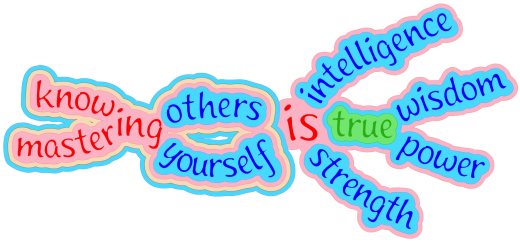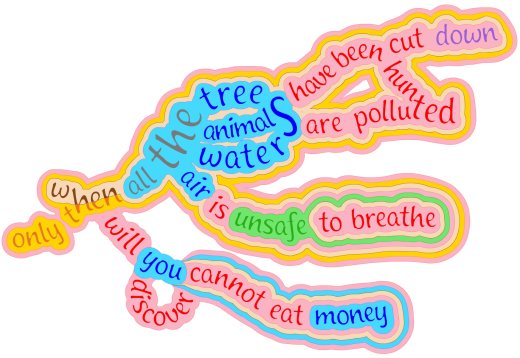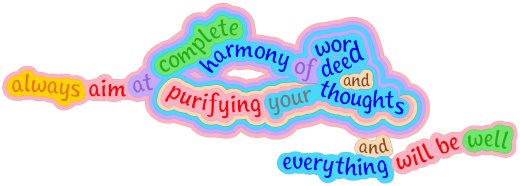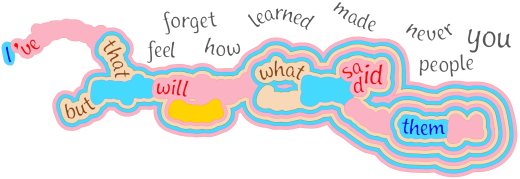People will never forget how you make them feel
David Warr, UK
E-mail: david@languagegarden.co.uk, Web site: www.languagegarden.co.uk
Menu
Introduction
What is the actual quotation?
Listen and write
My favourite three
Learner recitals
Gapfill
Translate
Personally, I love quotations, beautifully crafted, clear and concise. Like a delicious chocolate, rich and smooth, melting in your mouth, they are made to be savoured. They make me stop still, I smile and gaze off into the distance. They make me feel warm inside. They're life-changing, for a moment at least. I'm sure many of you reading this will have a favourite or two, in maybe more than one language.
So what is it about them that makes them so good? Well, the sentiments they express, obviously. They can capture a great insight so neatly that life suddenly seems so simple. I can't help but marvel at their succinctness, the way they capture what I've felt and known all along, but have never thought to express it in such a wondrous way. They can calm and stimulate, relax and energise. And prick my conscience too, for I'm pointedly reminded of my shortcomings.
Being interested in language, we can look more closely at the language itself, its words and its structure. And here, a revelation! It is amazing the degree of parallelism. Parallelism is the term used to describe the repetition of a syntactic structure with key words changed. The structure stays the same, only the words are different. I've found this to be in all great writings, and for me, sits comfortably in the far-from-grey area between poetry and prose; poetic prose we can say.
I've included some of my favourites here, and also presented them as language plants. These are colourful language materials where words branch out from each other, so removing repetition, and letting us clearly see how words collocate and fit together. I'm sure you could use some or all of these in your pre-intermediate classes and above.

Thomas Edison
"Genius is one per cent inspiration,
ninety-nine per cent perspiration."

Winston Churchill
"A pessimist sees the difficulty in every opportunity;
an optimist sees the opportunity in every difficulty."

Helen Keller
"The best and most beautiful things in life cannot be seen or even touched.
They must be felt within the heart."

Zen Saying
"Knowing others is intelligence;
knowing yourself is true wisdom.
Mastering others is strength;
mastering yourself is true power."

Cree Prophecy
"When all the trees have been cut down,
when all the animals have been hunted,
when all the waters are polluted,
when all the air is unsafe to breathe,
only then will you discover
you cannot eat money."

St Francis
"Lord, grant me the serenity to accept the things I cannot change,
the courage to accept the things I can
and the wisdom to know the difference."

Mahatma Gandhi
"Always aim at complete harmony of thought and word and deed.
Always aim at purifying your thoughts and everything will be well."

Maya Angelou
"I've learned that people will forget what you said, people will forget what you did,
but people will never forget how you made them feel."
Here are some lesson ideas:
Give out the plant to your learners and see if they can work out the actual quotation. Here, learners have to think about meaning and structure, so they have to get the right words in the right order. There will be other, grammatically correct, possibilities, and a useful discussion can ensue as to which version is better, or more poetic, and why.
Give out the quotation face down. Read out the quotation, maybe twice. Learners turn over the language plant and use it to work out the exact wording. If you read out a few quotes together, this will place a greater load on memory, so more language work will have to be done.
Learners can decide which are their favourites. Maybe a top three. When we personalise language, we process it more deeply. We own it more, and this gives us a greater chance of remembering and learning it.
Learners are each given a different quotation. They learn it by heart. You may need to help with language. Learners then find a partner and recite their quotation, without the text or plant. Their partner must write it down. Afterwards, they can correct their work.
The last activity is for the Maya Angelou quotation, where words have been taken out and placed above the language plant. Give out the gapfill plant and read out the quote. Learners have to write the words into the right spaces. Actually, language plants are colour-coded. Nouns are blue and fit onto light blue spaces; Verbs are red and fit onto pink spaces. The other colours needed for this one are: Adverbs - orange/light orange background; Connectives - brown/cream background.
Let your learners translate the quotations. Ask how they sound to them in their own language.



|